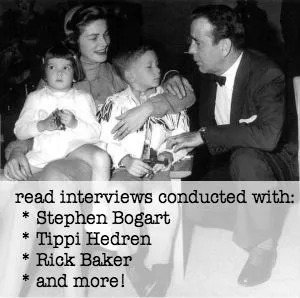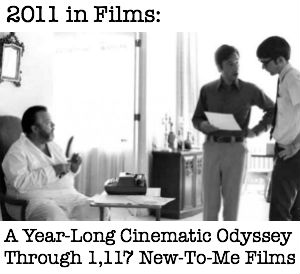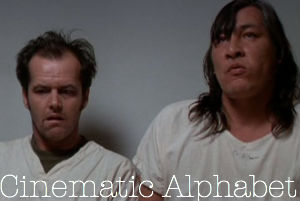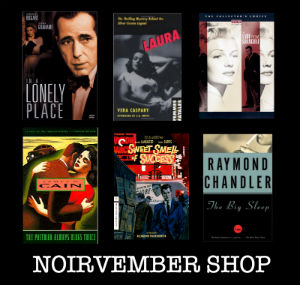Oscar Vault Monday – Apocalypse Now, 1979 (dir. Francis Ford Coppola)
While nothing can replace The Thin Red Line as my all-time favorite war film, I think this movie would be a close second, even if I did just see it for the first time on Saturday (I know, I know). I’d like to point out first off that I watched the Redux version and not the theatrical version, so this post will be based on that version of the film. I’m also not going to talk a lot about some of the behind the scenes stories (there are a lot) and probably won’t cover all the themes in the film because I feel like the only way to do everything about this film justice would be to write 100 pages. I will, however, talk about the main performances and a couple of scenes that I really loved. The film was nominated for eight Academy Awards, winning two: Best Sound (won), Best Cinematography (won), Best Art Direction, Best Film Editing, Best Adapted Screenplay, Best Supporting Actor Robert Duvall, Best Director and Best Picture. The other films nominated for Best Picture that year were All That Jazz, Breaking Away, Norma Rae and winner Kramer Vs. Kramer. Side note: I really love Kramer Vs. Kramer, so this is not a “this film is better than the winner” post; it’s more like a “this film is equally as awesome” post.
I don’t really know what took me so long to watch this film. It was one of the films I always meant to watch but never got around to watching. I’m so glad I’ve finally seen it because it was even more amazing than I thought was possible. Like I said earlier, it would be near impossible to discuss everything there is to discuss about this film. I think this is definitely one of those films that every time you watch it you’d find something new you hadn’t gotten from it in previous viewings. Something this intricate and layered cannot ever be discussed fully or viewed enough. Also, there may be some spoilers.
I just have to start my discussion of this film with Martin Sheen. His performance is so complex and yet so subtle; it’s about 80% in his eyes. I love when an actor can express so much and with such complexity with just his face. But then Sheen’s Captain Willard also provides the film’s narration, which, like his trip up the river, guides the film’s progression. It’s a shame he didn’t get an Oscar nomination for this performance, but subtly often goes unrewarded by the Academy. As it happen Sheen, currently 70 years old, has never been nominated by the Academy.
One of the first characters we meet besides Sheen’s Willard is Colonel Lucas, played by Harrison Ford. Although Ford played an integral supporting role in 1977’s Star Wars, it wasn’t until the 1980s the Ford became a genuine Star. Here we see him in a small, but important, role.
After receiving his orders (to seek out and “terminate” rogue Colonel Kurtz), Willard then joins the crew of the Erebus. In Greek mythology, Erebus is the son a primordial god, Chaos, and represented the personification of darkness and shadow. Something tells me the name of the boat is no coincidence. The boat’s commander is George “Chief” Phillips (Albert Hall). Hall’s Chief is stoic through most of the film, preferring to “remain on the boat” as often as possible. It isn’t until towards the end of the film that he shows some extreme emotions, something that leads him to a terrible fate.
I love the description of Frederic Forrest’s Jay “Chef” Hicks: “He was wrapped too tight for Vietnam; probably wrapped too tight for New Orleans.” Forrest’s performance certainly does that description justice. On a side note, Frederic Forrest plays the spaced-out hippie father of Julie in 1983’s Valley Girl (one of my favorite films).
Sam Bottoms plays surfer-champ-turned-soldier Lance B. Johnson. I loved his progression throughout the film, starting out kind of laid-back and by the end of the film becoming as cracked as everyone else. During one particularly horrifying scene, the crew encounters a boat with a woman on it that appears to be suspicious. One thing leads to another and the woman is killed, only to be revealed that the suspicious item on her boat was a yellow lab puppy. Johnson’s reaction to finding the puppy and his protective behavior towards it illustrates how so many of the men fighting this war are not cold-hearted soldiers; but rather men who love puppies. This idea goes hand-in-hand with Kurtz’s recommendation that if the army employed only men who were committed to doing only what needed to be done to win the war, they’d win the war.
The last member of the crew is Tyrone “Mr. Clean” Miller, played by an 18-year-old (and nearly unrecognizable) Laurence Fishburne. His character is supposed to be 17 years old. His naiveté, violence and ultimate demise is one of the most heartbreaking aspects of the film.
Which brings us to Lieutenant Colonel Bill Kilgore (Robert Duvall) who, I’ve read, is even crazier in the Redux version than in the theatrical version. His performance as Kilgore is arguably the most famous from the film, as it is his character that delivers the film’s most famous line. Duvall was the only actor from the film to receive an Academy Award nomination, Best Supporting Actor (the second time he’d been nominated in that category, both for films directed by Coppola). Although he lost to Melvyn Douglas in Being There, Duvall would go on to be nominated for four more times, winning Best Actor for 1983’s Tender Mercies. With Kilgore I think we get an important glimpse at how insane just about everyone involved with the war for too long becomes.
While both the original theatrical version and the Redux version the crew come across some Playboy Bunnies, who have been flown in to entertain some troops. What isn’t in the theatrical version, is a scene that takes place the next day wherein the Bunnies helicopter is out of fuel and thus stranded out an outpost with no commanding officer. Willard trades some of their fuel with their manager for an hour with Bunnies for his crew. What follows is a kind of disturbing scene wherein the Bunnies appear to be stoned (or maybe just in shock?) while Chef and Lance “enjoy” their company. It’s an interesting scene because it continues the theme of madness, something that no one in the film seems to be able to escape.
Also cut from the theatrical release is a scene wherein Willard and crew run across some French colonists who have had a plantation in the country for over 70 years and refuse to leave. This section is heavily political (perhaps why it was cut in the first place), but is vastly important as it shows an aspect of the war and the country that is largely ignored. Aurore Clément gives a particularly great performance, especially in the dinner seen; she barely speaks any words, but her eyes speak volumes.
The crew then find themselves at the Do Long bridge, another outpost with no apparent commanding officer. This scene is one of the most beautiful scenes in the film, while at the same time being one of the most violent. It’s no wonder that Vittorio Storaro won the Oscar for his work on this film.
Another scene I loved for its aesthetic beauty is when the crew of the Erebus finally make it to their destination. The color palette throughout the film is gorgeous, but in this scene it is particularly stunning.
Dennis Hopper delivers a wonderfully manic performance as an unnamed American photojournalist who has been covering the war since 1964. We aren’t told how he wound up with Kurtz, but he has become a devoted follower none-the-less. Hopper’s photojournalist has about five cameras slung around his neck and stops in the middle of talking to take pictures frequently. Even in his crazed state he’s recording any and everything, much, we’re told, to Kurtz’s chagrin. The scene goes something like this:
Photo Journalist: I wish I had words, man. I wish I had words. . .I can tell ya something like the other day he wanted to kill me. Somethin’ like that. . .
Willard: Why’d he wanna kill you?
Photo Journalist: Because I took his picture. He said “If you take my picture again, I’m gonna kill you.” And he meant it.
The line delivery is just so perfectly timed. Hopper is at the top of his game here and his mania makes for a great juxtaposition with Sheen’s subtly.
I’m pretty sure it was three hours before we even got this minimal glimpse at Marlon Brando, who was given top-billing (one could argue the credits are in alphabetical order, but still). Legend has it the shadows and many close-ups of Brando’s face were to hide the fact that Brando had gained a lot of weight. Regardless of the why behind this technique, it works brilliantly and the result is Kurtz as an almost mythical figure – much like the god his followers are described as believing he is. The film ends with the same lines as the book on which it is (loosely) based: “The horror. . .the horror.” But before we get to those lines, Kurtz explains his philospohy to Willard, in one of the most perfectly delivered film monologues I’ve ever seen:
Kurtz: I’ve seen horrors… horrors that you’ve seen. But you have no right to call me a murderer. You have a right to kill me. You have a right to do that. . .but you have no right to judge me. It’s impossible for words to describe what is necessary to those who do not know what horror means. Horror. . .Horror has a face… and you must make a friend of horror. Horror and moral terror are your friends. If they are not, then they are enemies to be feared. They are truly enemies! I remember when I was with Special Forces… seems a thousand centuries ago. We went into a camp to inoculate some children. We left the camp after we had inoculated the children for polio, and this old man came running after us and he was crying. He couldn’t see. We went back there, and they had come and hacked off every inoculated arm. There they were in a pile. A pile of little arms. And I remember. . .I. . .I. . .I cried, I wept like some grandmother. I wanted to tear my teeth out; I didn’t know what I wanted to do! And I want to remember it. I never want to forget it. . .I never want to forget. And then I realized. . .like I was shot. . .like I was shot with a diamond. . .a diamond bullet right through my forehead. And I thought, my God. . .the genius of that! The genius! The will to do that! Perfect, genuine, complete, crystalline, pure. And then I realized they were stronger than we, because they could stand that these were not monsters, these were men… trained cadres. These men who fought with their hearts, who had families, who had children, who were filled with love. . .but they had the strength. . .the strength. . .to do that. If I had ten divisions of those men, our troubles here would be over very quickly. You have to have men who are moral. . .and at the same time who are able to utilize their primordial instincts to kill without feeling. . .without passion. . .without judgment. . .without judgment! Because it’s judgment that defeats us.
What’s so great is Brando’s subtle performance, which compliments Sheen’s equally subtle performance. What we get are two men who, seemingly, understand each other perfectly. Kurtz knows that Willard is there to “terminate” him; Willard sees the method behind Kurtz’s madness. I think that the only reason Kurtz allows Willard to kill him is because he knows that he understands him, that in Willard he will live on.
Coppola superimposes Willard’s head over other scenes throughout the film, but I think it is most effective in the denouement of the film. It’s as if all the madness – the jungle, Kurtz’s followers, Willard – have become one with the death of Kurtz. With his final actions – carrying out his orders – Willard has given up all his agency and is now irrevocably part of it all.
If you’re interested in purchasing the film, you can do so here.
Posted on March 14, 2011, in Oscar Vault Monday and tagged 1979, Albert Hall, Apocalypse Now, Aurore Clément, Dennis Hopper, Francis Ford Coppola, Frederic Forrest, Harrison Ford, Laurence Fishburne, Marlon Brando, Martin Sheen, Robert Duvall, Sam Bottoms, Vittorio Storaro. Bookmark the permalink. 13 Comments.
































Great post; this probably is my favorite war movie of all time (with Thin Red Line incidentally being near the top too). I don’t think there’s ever been a more elegant portrayal of the madness and absurdity caused by war. There are parts of this movie that are more terrifying than most horror movies. You probably know this, but there’s a feature length documentary about the movie itself, Hearts of Darkness.
I need to get ahold of that Doc and watch it, I bet it’s fascinating.
Thank you for such an excellent review of one of my all-time favorite movies. Now I just have to figure out who pinched my DVD.
brilliant analysis of a fantastic film! I actually also saw it recently (it was one of those films I’d been meaning to see for forever). I agree that Martin Sheen’s performance was fantastic, and that he was acting even with his eyes (for example, in the brilliant opening scene, his wide-set eyes speak so much). the cinematography was indeed breath-taking-raw yet beautiful.
and the whole mood of the film was equally enthralling. it’s much more a poetic epic than a conventional war film, and also a film about morality and obsession. your remark about the name of Willard’s boat solidifies the flood of symbolism in the film. and Marlon Brando was superb! I agree that the lighting (though intended initially for the purpose of hiding his weight) worked impeccably. it reinforced Kurtz’s intimidating, godly presence.
I know that without a doubt I’ll be rewatching this film throughout the years. what an awe-inspiring masterpiece!
Pingback: World Spinner
Pingback: March Madness, Or How I Watched 144 Films in 31 Days « the diary of a film awards fanatic
Pingback: Oscar Vault Monday – Mystic River, 2003 (dir. Clint Eastwood) « the diary of a film awards fanatic
Pingback: Oscar Vault Monday – Network, 1976 (dir. Sidney Lumet) « the diary of a film awards fanatic
Pingback: Oscar Vault Monday – To Kill A Mockingbird, 1962 (dir. Robert Mulligan) « the diary of a film awards fanatic
Pingback: 2011 in Films: A Year-Long Cinematic Odyssey Through 1,117 New-To-Me Films « the diary of a film awards fanatic
Pingback: Berlin and Beyond, Instant Netflix and Stars in Shorts: September 2012 in Films « the diary of a film history fanatic
Pingback: Oscar Vault Monday – Cabaret, 1972 (dir. Bob Fosse) « the diary of a film history fanatic
Pingback: Female Filmmaker Friday: Valley Girl, 1983 (dir. Martha Coolidge) | the diary of a film history fanatic